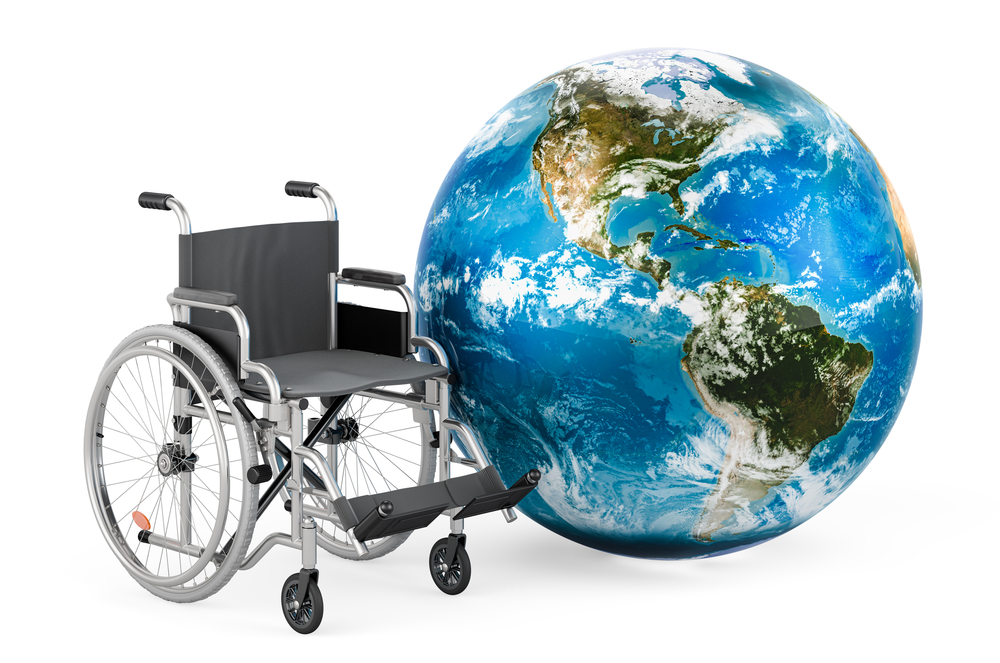In every corner of the world, individuals with disabilities navigate unique challenges and barriers to full participation in society. From inaccessible infrastructures to discriminatory attitudes, the obstacles they face are diverse and pervasive. However, amidst these challenges, a powerful movement is emerging—one that advocates for the rights, inclusion, and empowerment of people with disabilities on a global scale.
Breaking Down Barriers:
The global disability rights movement[1] aims to dismantle the physical, social, and attitudinal barriers that prevent individuals with disabilities from fully exercising their rights and accessing opportunities. This movement is grounded in the principles of equality, dignity, and social justice, recognizing that disability is not a limitation but a natural aspect of human diversity.
Legislative Advances:
Over the past few decades, significant progress has been made in advancing disability rights at the international level. The United Nations Convention on the Rights of Persons with Disabilities (CRPD), adopted in 2006, serves as a landmark treaty that promotes the full inclusion and participation of people with disabilities in all aspects of life.[2] Ratified by over 180 countries, the CRPD establishes a comprehensive framework for protecting and promoting the rights of individuals with disabilities, including provisions related to accessibility, non-discrimination, and participation in political and public life.
Promoting Inclusive Development:
In addition to legal frameworks, efforts to promote inclusive development are essential for advancing disability rights globally. This involves ensuring that development initiatives, in areas such as education[3], healthcare, employment, and infrastructure projects, are accessible and responsive to the needs of people with disabilities. By mainstreaming disability inclusion into development policies and programs, countries can create more equitable and sustainable societies for all.[4]
Changing Perceptions:
Central to the global disability rights movement is the shift towards more inclusive and empowering narratives about disability.[5] Instead of viewing disability as a deficit or tragedy, there is growing recognition of the strengths, capabilities, and contributions of individuals with disabilities. Through advocacy, storytelling, and representation in media and popular culture, stereotypes and misconceptions about disability are being challenged, paving the way for greater acceptance and social integration.
The Power of Collective Action:
At the heart of the global disability rights movement is the power of collective action and solidarity. People with disabilities, along with their allies, advocates, and organizations, are working tirelessly to raise awareness, influence policy, and drive systemic change. By amplifying their voices, sharing their experiences, and mobilizing for action, individuals with disabilities are shaping a more inclusive and equitable world for future generations.[6]
Looking Ahead:
While significant strides have been made, much work remains to be done to achieve full equality and inclusion for people with disabilities worldwide. Addressing persisting barriers, such as poverty, violence, and lack of access to essential services, requires sustained commitment and collaboration across sectors and stakeholders. A considerable cohort of SWEET members, including Anne Elizabeth, AnnMarie, Vilma, Stuart, Marie, and many others, actively engage in advocacy efforts to champion the rights of the less fortunate and reduce disparities. The impact of their work is profound, and we recognize the need for more clinicians to join their ranks. We encourage you to stand alongside them and contribute to creating positive change in our communities. As we look ahead, let us continue to champion the rights and dignity of individuals with disabilities and build a more inclusive world where everyone can thrive.
In closing, the global disability rights movement is a testament to the resilience, courage, and determination of individuals with disabilities and their allies. Together, we can break down barriers, challenge stereotypes, and create a world where diversity is celebrated, and every person is valued and respected, regardless of ability.
[1] Pateisky, Daniel. International disability rights advocacy: Languages of moral knowledge and institutional critique. Routledge, 2021.
[2] MacKay, Don. “The United Nations Convention on the rights of persons with disabilities.” Syracuse J. Int’l L. & Com. 34 (2006): 323.
[3] Ellis, Katie, et al. “Mainstreaming accessible digital technologies in higher education: a human rights approach to disability inclusion.” Activating Cultural and Social Change. Routledge, 2021. 227-240.
[4] Skarstad, Kjersti, and Michael Ashley Stein. “Mainstreaming disability in the United Nations treaty bodies.” Journal of human rights 17.1 (2018): 1-24.
[5] Erkulwater, Jennifer. “Rights, Identity, and Organizational Change among Disability Rights and Parent Advocacy Organizations: Policy Feedback and the Politics of Intersectional Identity.” APSA 2014 Annual Meeting Paper. 2014.
[6] Chhabra, Gagan. “Global Disability Summit: How to realize “nothing without us”.” Rethinking Disability and Human Rights. Routledge, 2023. 137-140.

